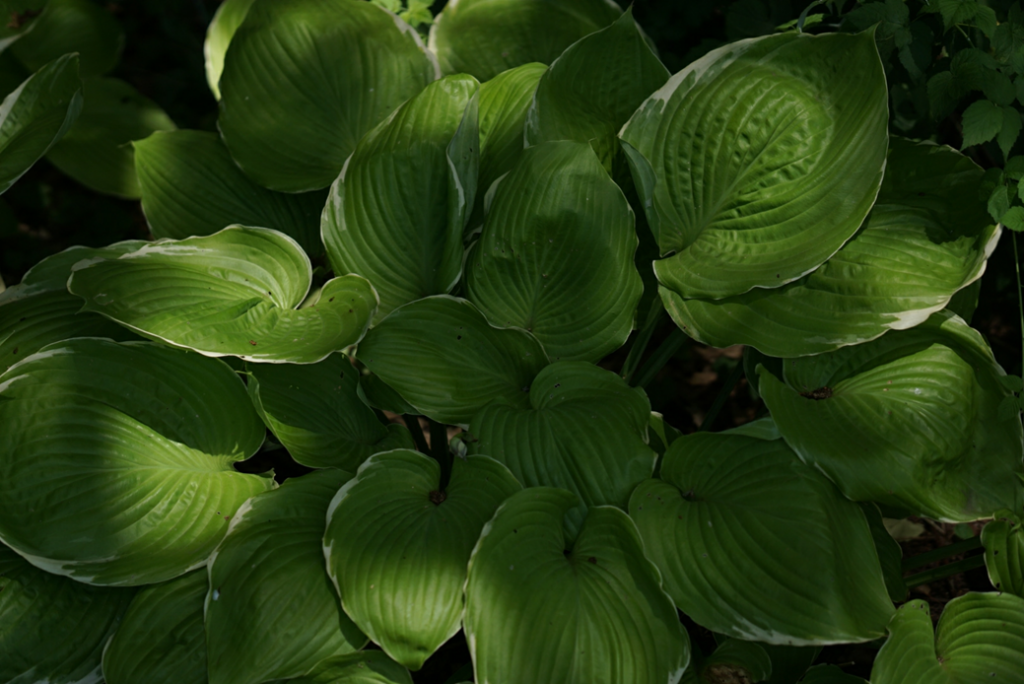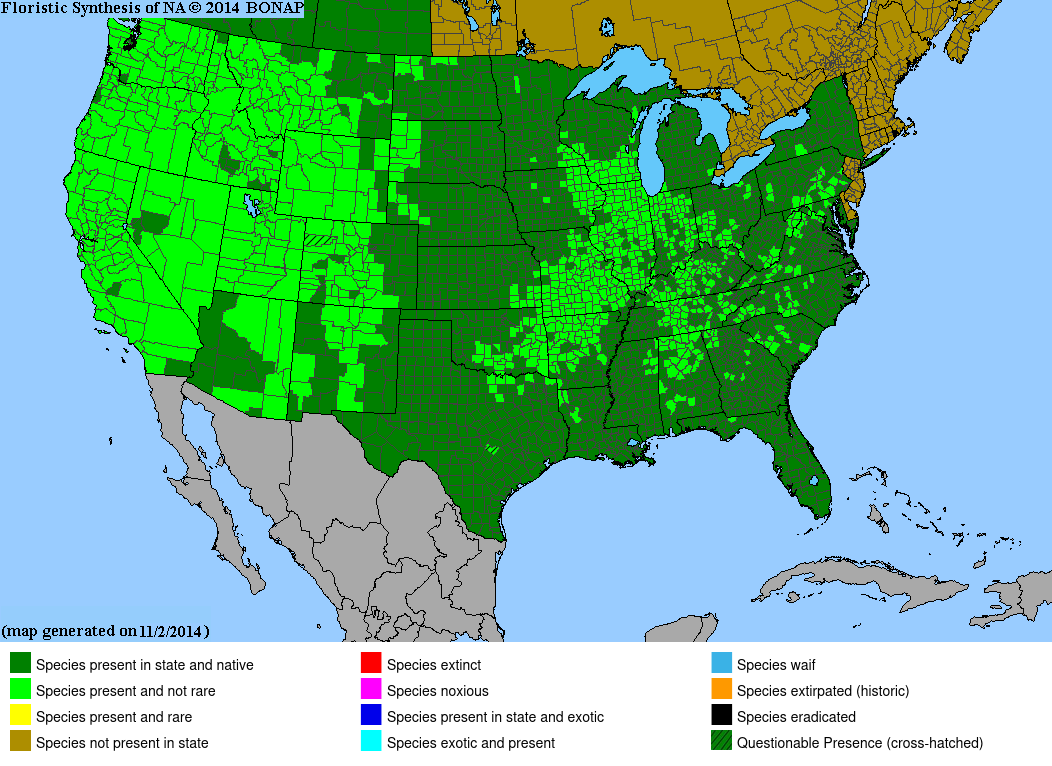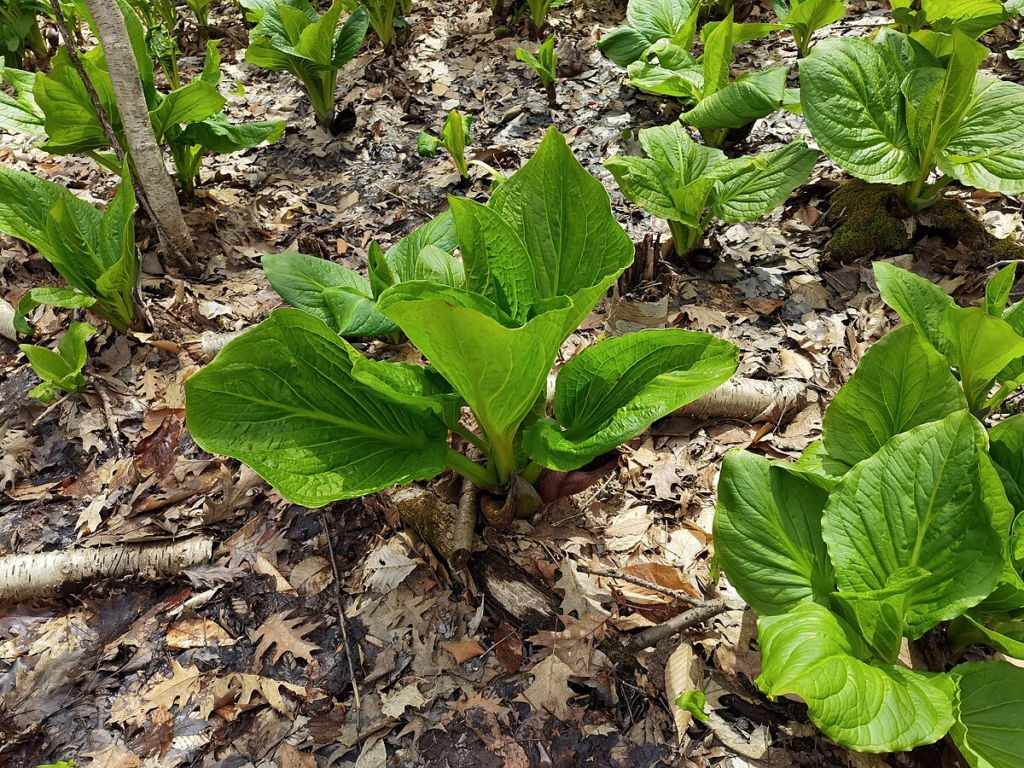Following the American Revolution, the people of this new country found themselves with an abundance of disposable income and time. Jay’s Treaty in 1794 renewed trade with England, revitalizing the post-war economy and allowing American collectors to send their “new discoveries” back to Europe, fueling the accumulative fads of the European aristocracy. This craze didn’t stop with Europe; curiosities, plants, and animals from Asia, particularly China and Japan, became highly sought after due to the expansion of imperial trade routes. This global exchange paved the way for the first botanical gardens and nurseries in the United States, which set the stage for landscaping trends across the continent.
During the 1800s, collectors like Thomas Hogg introduced the first invasive kudzu, knotweed, and burning bush (Higgins, 2017), representing some of our oldest and most persistent ecological challenges. However, none quite captured American gardeners’ hearts like the hosta, a staple in shaded gardens across the eastern United States and even in the dry climates of the West. While not classified as invasive, hostas occupy valuable space that could support native plants—some of which are critically threatened. As we look to restore human-occupied lands, whose acreage rivals that of federal parks, we must consider replacing these non-native staples with overlooked native plants that can thrive in their place.

The hosta is a member of the family Asparagaceae and whose native range extends across the eastern coast of Asia and as far north as Russia, to as far south as Guangdong Province in China (Ng, 2018). The characteristic spindly scapes and their bugle-like flowers protrude from the center of a bundt cake of considerable, dark green, vascular, lance-shaped leaves. In the wild, it grows in shaded woodland areas in rich, moist soils, a property coveted by the modern horticulturist. Further cultivations have created dwarfs, giants, and explosions of leaf color. Frances Williams of Massachusetts is known for distributing a hosta with yellow-edged leaves in the 1930s (Wister, 1970), which now likely makes the top five of the most common varieties sold commercially.
Arguably, the beginning of the commercial ornamentalization of plants in North America began with hostas and other East Asian cohorts. We have a surprisingly long history with them. However, in North America they add very little ecological value. This isn’t to say that they have zero purpose or function. Bees and flies will absolutely visit hosta flowers for food (though flies have never been particularly picky). But the choice we have here is a botanical opportunity cost. Invasive species are the biggest problem in habitats that have not been disturbed by human activity, but with habitats that have been disturbed, our biggest problem is having any biodiversity at all. Turf grasses leave scant resources for pollinators, and the flowers that are present are likely clones of exotic ornamental varieties from large industrial nurseries that won’t be recognizable by many insects (White, 2016). The shaded niches that hostas occupy also take valuable space from what could be wetland and forest bottomland species, with wetland species being particularly threatened by human activity.
It would be naive to imagine that every plant has an exact one-to-one counterpart on the other side of the Pacific, and the native replacement for the hosta won’t be a perfect fit, but we do have a lot to work with. North America is a diverse place, and knowing the areas and the criteria that we will have when choosing our landscaping will help narrow down what replacements we can find. Regarding the hosta, some of us like the flowers, some of us like the foliage, but most of us can appreciate its unfussy nature. That aspect is probably the most beautiful part about natives. They’ve evolved over millions of years to handle the exact spot you are in. Maybe not being next to vinyl siding or surrounded by colored mulch, exactly, but provided some small accommodation, they really won’t need much input.
Shooting Star (Dodecatheon meadia)

Among the meadows, prairies, and woodlands, the “shooting star” is a remarkable member of the family Primulaceae, the primrose family. It’s incredibly versatile and thrives from the corners of Texas to Pennsylvania (Mahr). Much like the hosta, it grows from a basal rosette of leaves and produces long scapes where, instead of bugles, an umbel of white and lavender shuttlecock flowers seems to shower towards the ground. The foliage is thinly lance-shaped and vaguely like the common plantain, but has less pronounced veins where the midrib is the most visible. For those that appreciate the hosta flower growth, a field of blooming shooting star stalks can be incredibly similar to borders of hosta. The flowers themselves are quite different, however, and the foliage does not vary much in size or color.
As far as caring for the flower, the shooting star prefers well-drained moist soil like many other plants and can tolerate rocky cliff sides (Smith, 2020). It makes a popular spot for queen bumblebees in the spring season when it blooms. This bloom time, however, will be a bit fleeting compared to the hosta. Its bloom in spring is followed shortly after by its dormancy, which usually completes by midsummer and will leave with no foliage or flowers past that point.
In stark contrast to the other potential replacements, the shooting star is both popular and easy to access. It’s known for taking multiple years to become fully established, but once it’s secure, it can handle a variety of habitats, sunlight conditions, and enough surface-level resemblances to the hosta that one could easily mistake the two at first glance.

Skunk Cabbage (Symplocarpus foetidus)

Within the eastern woodlands of the United States are rich floodplain communities along the banks of streams or rivers that host a wealth of diversity from both plants and animals. And on these rich, heavily moistened soils, from Minnesota to Maine, and from Michigan to Tennessee, one can find Symplocarpus foetidus, commonly named the “eastern skunk cabbage” or the “foetid pothos.” It’s a member of the Araceae family and has a unique flower with a spadix and spathe, a sort of hooded corn cob. The family will be pretty familiar to houseplant collectors as many members, such as Spathiphyllum cochlearispathum, the “peace lily,” are widely available in greenhouses.
One of the more frequently stated appeals of the hosta is both the presentation of the foliage and the “tropical” look. Though the latter is pretty subjective, the eastern skunk cabbage, like the hosta, presents foliage in a basal rosette with lance-shaped leaves and pronounced veins. The colors are not nearly as diverse; they come in one shade: green. This is going to have to be forgiven for an incredibly wild plant that doesn’t have generations of selective breeding behind it.
Being native to wetland environments in the understory of forests, shade is definitely fine with this plant. We are looking at shade tolerances that will certainly surpass the hosta in most cases. This, in a lot of ways, gives the skunk cabbage even more freedom for plantings, provided the correct amount of moisture is there. This replacement isn’t without issues. Finding seeds or starts for this plant won’t be easy. I, myself, am on a waiting list to get some seeds to try cultivating it. Once we’re past this first barrier, there’s then the question of our actual watering requirements. The soil will need to be consistently moist, and it’s unlikely that the plant has any drought tolerance. It being planted in a heavily shaded area, this might not be as hard as it seems to meet these requirements, but if the planting area is shaded but consistently dry, it may take more watering than we’ll have initially signed up for, which can either be an inconvenience at best or further ecological damage at worst. Lastly, unlike the hosta, the foliage of the skunk cabbage recedes or withers away around midsummer to make way for that large hooded flower. Anyone hoping for a consistent look all year round won’t be enjoying this process. Overall, the skunk cabbage resembles the hosta in most respects. It will be difficult to find, has a shorter season for growth, and if starting from seed, it will prove to be a pretty involved project.

Giant Trillium (Trillium chloropetalum var. giganteum)

The Trillium genus spans the entirety of North America and has many species and variations that rival the size and foliar diversity of the modern hosta. Particularly this Trillium species native to California: Trillium chloropetalum, the “giant trillium.” A single plant can range from twelve to twenty-four inches tall and wide and will continue to grow more scapes rhizomatically.
The titular three leaves of this species have a camouflage of dark and light green variegation that distinguishes it from the other foliage of the forest floor. The bee-pollinated flower isn’t similar to the hosta’s in any way, but like all Trillium, it is very stunning. This species in particular bears a striking burgundy flower. Most trilliums are accustomed to forest floor habitats, so they will also make a great shaded garden planting. It will, like the hosta, prefer moist, well-drained soil.
The options presented here and many more can fill such a space with the durability, longevity, and sustainability that only natives can. Growing this particular species won’t be easy, and it will likely cost a lot of money compared to traditional horticultural species, but it is available occasionally. It’ll require patience as not only will the seeds require multiple dormancy cycles, but also around four years before it reaches full maturity. The Trillium genus is an excellent planting in all habitats, and T. chloropetalum isn’t exclusively the replacement. Other areas will have other native trilliums, but they will vary in size and presentation. This species was selected as being the most similar to the prototypical hosta, but there are plenty of small hostas that can look like other small trilliums. Some species, especially T. grandiflorum of the eastern United States, are especially simple to both acquire and grow.

Conclusion
I performed a brief interview with someone who has spent a lot of time in the garden and works in the horticultural space but is not overly familiar with native plants. Our discussion began with what the hosta does for them and why it appeals to them. “They are very disease- and pest-free and don’t need a ton of maintenance,” they mentioned. This is completely understandable. They aren’t absolutely disease- or pest-free, but they are quite resilient compared to the average. If you’ve ever tried removing the rhizome and tossing it to the side or into a compost pile, the shoots will continue to regrow unless buried substantially. I was also reminded that “they have so many varieties, colors, and sizes available,” an aspect we’ll have to credit to the generations of selective breeding. From what they know, they felt that the hosta was an incredibly unique plant with equally unique foliage, and the benefits of low maintenance and high selection were added bonuses. I was able to show the three species above, however, and I was pleased to see that I was met with instant interest. I shared a lot of the info here, and I was told that these options were very nice and that they seemed similar to hostas. Symplocarpus foetidus was a clear winner for the most alike in this case.
We started to talk more about some of the potential issues transitioning from the hosta. Availability was definitely top of mind for them. The hosta has the enormous advantage of being available at large big-box nurseries, and with the nearly as important advantage of good prices. I offered the idea that if any of the three options had such availability, would they be willing to replace all of them. To not much surprise, I was told that if these were available, they “would definitely replace all of my hostas.”
As it turns out, the path to replacement for such an icon of the American garden isn’t much different from replacing any other. We all have the interest in making these changes for the benefit of our world, but the barriers we have set up, either intentionally or otherwise, are mighty. It takes research and it takes going out of our comfort zones, but the benefits are beyond measure. The hosta is almost a set-it-and-forget-it type of planting that, for many people, is something purchased to fill a space with something beautiful.
References
Higgins, A. (2017). How America’s frenzy for Japanese plants brought beauties — and a mega-weed. The Washington Post.
Ng. (2018, March 16). Hosta. The Registry of Nature Habitats.
Mahr, S. (n.d.). Shooting star, Dodecatheon meadia. Wisconsin Horticulture.
Smith, W. R. (2020). Dodecatheon meadia: Prairie shooting star: Rare species guide. Minnesota Department of Natural Resources.
White, A. S. (2016). From nursery to nature: Evaluating native herbaceous flowering plants versus native cultivars for pollinator habitat restoration (dissertation). From Nursery to Nature: Evaluating Native Herbaceous Flowering Plants Versus Native Cultivars for Pollinator Habitat Restoration.
Wister, G. S. (1970). Frances Williams and her Garden Adventures. Arnoldia, 30(4), 148–154.
Community Insights:
Readers have shared their enthusiasm for native alternatives to hostas while also highlighting the importance of considering plant availability, seasonal appearance, and ecological roles in the garden. Some suggested Heuchera (Coral Bells) and Tiarella (Foamflower) as more practical native substitutes that offer year-round interest and align better with the needs of many home gardeners.
Here’s a list of additional plant suggestions from the community as alternatives to hostas:
- Heuchera (Coral Bells) – Specifically, Heuchera villosa (‘Autumn Bride’) was highlighted for its shade tolerance, evergreen nature, drought resistance, and appeal to pollinators.
- Tiarella (Foamflower) – Recommended for its shade tolerance, beautiful blooms, and ability to provide ground cover.
- Carex (Native Sedges) – Options like Carex plantaginea and Carex pennsylvanica are shade-tolerant, hardy, deer-resistant, and provide excellent ground cover.
- Ferns – Native ferns make lovely groundcovers that thrive in shaded environments.
- Anemone – Native anemones were suggested for their ecological benefits and groundcover properties.
- Foamflower (Tiarella cordifolia) – Noted again as a good option for shade, with similar seasonal interest and growing conditions as hostas.
- Golden Alexander (Zizia aurea) – Suggested as an alternative for its low maintenance and ecological benefits.
- Blue Flag Iris (Iris versicolor) – Mentioned as a visually appealing alternative suitable for similar conditions.
- Canada Mayflower (Maianthemum canadense) and Solomon’s Seal (Polygonatum spp.) – Recommended for their shade tolerance and ability to serve as groundcover.
- Bigleaf Aster (Eurybia macrophylla) – A better substitute than Skunk Cabbage or Trillium due to its shade tolerance and functional similarities to hostas.
Looking to source these native plants? Check out our nursery list to find suppliers near you!

